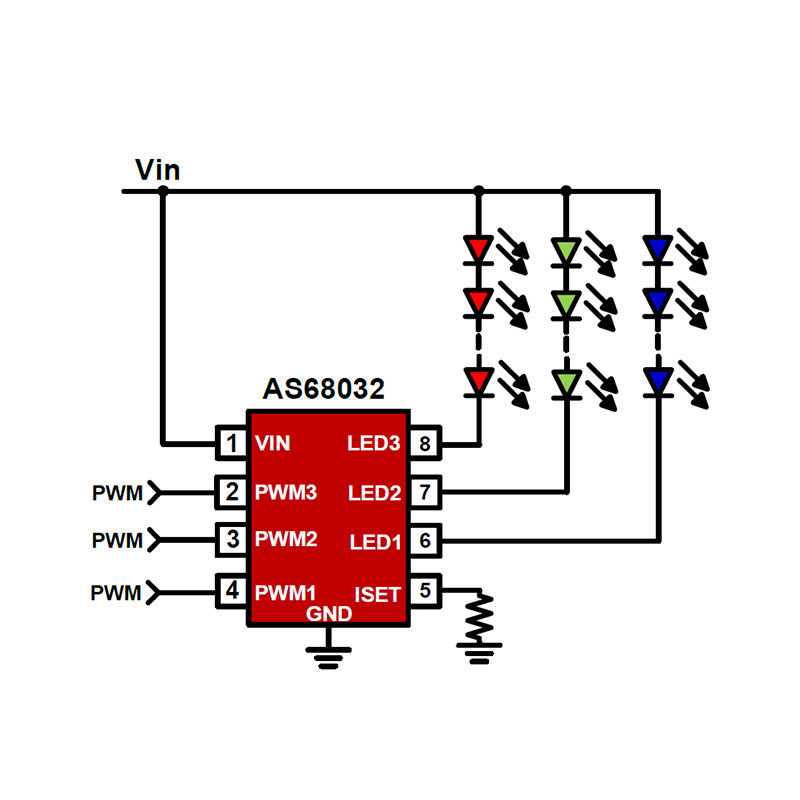Understanding DC-DC Constant Current Chips: Key Components in Modern Electronics
2025-02-14
DC-DC constant current chips are essential components in modern electronics, providing efficient power management for a wide range of applications. These chips are particularly useful in situations where a stable, regulated current is needed, regardless of variations in voltage. In this article, we will explore what DC-DC constant current chips are, how they work, and their applications in various fields.
What is a DC-DC Constant Current Chip?
A DC-DC constant current chip is a type of power converter designed to regulate and maintain a constant current output, regardless of fluctuations in input voltage or load conditions. Unlike standard voltage regulators, which control the output voltage, a constant current chip focuses on delivering a steady current to the load. This is especially important in applications where precise current control is necessary, such as in LED lighting, battery charging, and motor control.
These chips are often used in DC-DC converters, which are devices that change one DC voltage level to another. The key feature of a constant current chip is its ability to maintain a fixed output current, regardless of changes in the input voltage or the load it is powering.
How Does a DC-DC Constant Current Chip Work?
DC-DC constant current chips operate by adjusting the input voltage to maintain a consistent current output. They typically work by using a feedback mechanism to monitor the output current and make necessary adjustments to ensure it stays constant. Here's a simplified breakdown of how the chip works:
1. Input Voltage: The chip receives an input DC voltage, which can fluctuate depending on the power source.
2. Current Sensing: The chip continuously monitors the current flowing through the load (e.g., an LED or battery).
3. Feedback Control: If the current exceeds or falls below the desired level, the chip adjusts the output to maintain the constant current.
4. Regulation: Through this feedback loop, the chip regulates the output to ensure that the current remains stable, even if the input voltage changes or the load varies.
This feedback mechanism allows the chip to provide a reliable and consistent current, which is crucial for applications that require precise power delivery.
Applications of DC-DC Constant Current Chips
DC-DC constant current chips are used in a wide variety of applications where precise current control is required. Some of the most common applications include:
1. LED Lighting:
One of the most widespread uses of DC-DC constant current chips is in LED lighting systems. LEDs require a constant current to operate efficiently and maintain a long lifespan. Without a constant current, LEDs can become damaged, lose brightness, or fail prematurely. By using a DC-DC constant current chip, LED drivers can regulate the current to ensure optimal performance and longevity.
2. Battery Charging:
DC-DC constant current chips are also used in battery charging circuits. Many rechargeable batteries, such as lithium-ion or lead-acid batteries, require a steady current for safe and efficient charging. The chip ensures that the charging process is controlled and prevents overcharging, which could damage the battery or reduce its lifespan.
3. Motor Control:
In applications involving electric motors, such as in robotics or electric vehicles, constant current regulation is essential for maintaining stable motor performance. DC-DC constant current chips help regulate the current supplied to the motor, ensuring smooth and consistent operation, even when the motor’s load changes.
4. Power Supplies for Sensitive Equipment:
Certain sensitive electronic equipment, such as medical devices, scientific instruments, and communication systems, require a precise and stable current for proper functioning. A DC-DC constant current chip provides the necessary regulation to ensure these devices operate safely and reliably.
5. Solar Power Systems:
In solar power systems, constant current regulation is important for efficiently charging batteries and powering devices. The output voltage of solar panels can fluctuate due to changes in sunlight, so using a constant current chip helps ensure that the current delivered to the battery remains steady, regardless of these fluctuations.
Advantages of DC-DC Constant Current Chips
There are several key advantages to using DC-DC constant current chips in various applications:
1. Efficiency:
These chips are designed to operate with high efficiency, converting the input voltage to the desired output current with minimal energy loss. This is particularly important in applications like battery charging or LED lighting, where energy efficiency is a priority.
2. Reliability:
By providing a stable current, DC-DC constant current chips help ensure the longevity and reliability of the components they power. For example, in LED lighting, a constant current chip ensures that the LEDs are powered correctly, preventing premature failure and maintaining consistent brightness over time.
3. Compact Design:
DC-DC constant current chips are typically small and lightweight, making them ideal for use in compact electronic devices. Their small size allows them to be integrated into a variety of systems without taking up too much space.
4. Wide Input Voltage Range:
Many DC-DC constant current chips can operate with a wide range of input voltages, making them versatile and suitable for various power sources, including batteries, solar panels, and AC-to-DC power supplies.
5. Protective Features:
Many of these chips come with built-in protective features, such as overcurrent protection, thermal shutdown, and short circuit protection, which help safeguard both the chip and the powered device from damage.
Conclusion
DC-DC constant current chips play a crucial role in modern power management by providing precise and stable current regulation for a wide variety of applications. From LED lighting to battery charging and motor control, these chips are essential for ensuring reliable and efficient performance. Their ability to regulate the current output regardless of voltage fluctuations or load changes makes them an indispensable component in the design of many electronic systems. As technology continues to advance, the demand for efficient and reliable power management solutions like DC-DC constant current chips is likely to increase, driving further innovation in electronics.



